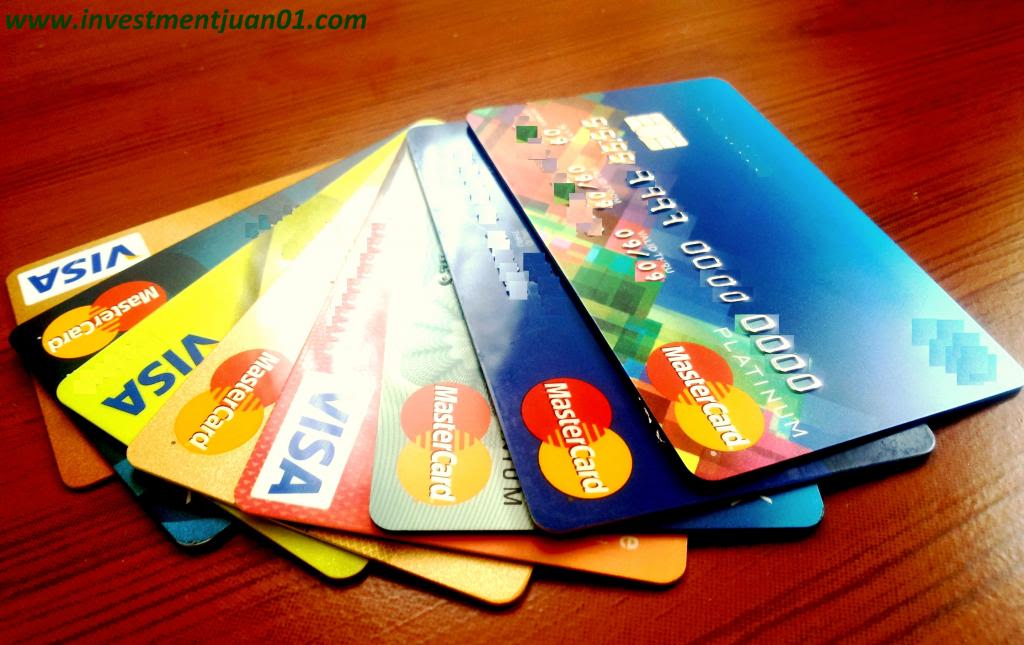*****************************
Considering applying for a credit card? How does it work anyway? What are the things you need to know before submitting that card application, or entertaining the calls of credit card agents? As follows is what you need to know on credit cards to be an informed customer, as well as bits of pieces of helpful information on credit cards in the Philippines.
Credit Card Defined
As a starter, what is a credit card? A credit card is a piece of plastic with a name, card number and mag stripe at the back that allows you to purchase on credit (purchase now, pay later basis). It is also the usual mode of payment for online transactions and purchases. You can also use credit cards in purchasing items abroad as it has international recognition, coverage and availability. Lastly, having a credit card (a well maintained one) improves your credit standing among banks.
Credit cards are issued by credit card issuers (usually banks in the Philippines) to those they deem credit-worthy, which in turn is established and evaluated by card issuers via credit, background and verification checks on the card applicant. Its main difference with a debit card is that debit cards, when used (‘swiped’), automatically deduct the swiped amount from a linked deposit/savings account. So for debit cards, payment is real time (advantage is that you don’t carry a wad of cash with you, no need to withdraw, you just swipe a debit card). But credit cards, there’s no need for a linked deposit account. No need for an immediate source of funds. But you need to be credit worthy. So where do the funds come from?
Credit Limit etc
Credit cards, when given, have a corresponding credit limit. This credit limit is the limit for all of your transactions using the credit card. Say the credit limit is Php100k, then the sum of all transactions (purchase, retail, cash, installment, fees) using the card must be within Php100k. Further, cards also come with cash limits, and at times, installment limits.
Cash advance limit, usually a fraction of credit limit, like 30% to 50%, is for withdrawing cash (not purchases) against the credit card. So if your ATM is already empty, you can actually withdraw cash using your credit card, within its cash limit. This is usually called cash advance. But you usually need a cash advance pin to withdraw cash from your credit card (just like ATMs). So if you were given a cash advance pin, keep it!
An installment limit, meanwhile, is the cap on the amount of purchases you can do that is on installment basis. For example, you’re buying a TV in an appliance store, and you want it payable on 12 months installment, you just have to make sure that the TV price is within your installment limits. Note though that not all cards in the Philippines have installments limits as separate limit. Credit limit and cash limit are the more usual features, with installments not offered as a separate credit line but is rather usually capped within the credit limit.
Card Associations
Most big banks in the country issue credit cards, but note that Visa, Mastercard, Diner’s Club and JCB are not banks. These are card associations. So banks issue credit cards under their names, but such cards are also members of above-mentioned card associations. The most prominent are Visa and Mastercard. You can think of the card associations as the Megalink and Bancnet counterpart for ATM networks. The card associations provide the link from the store to the issuing bank. Each card transaction passes thru the card associations’ systems, before reaching the issuing banks. As a consumer though, you don’t have to bother too much with card associations.
Getting Started: Signature and Activation
So say you were approved of a card and is excited to use it. The first thing you do is sign the back portion of the card as a security measure. Most transactions you do will require a signature that matches the signature in the credit card. This serves as deterrent for fraudsters who use stolen or lost cards: they should be able to forge the signature first before using the card. Some cards also come with cash advance pins for your use in case you want to get a cash advance. Be sure to keep this pin secret and secure as well.
The next thing you need to do is activate the card by calling the bank card hotline and answering some security questions. Other banks allow activation online while other banks deliver cards already activated. Again, activation is a security feature because you don’t want your card being intercepted and used by bad guys, while it is in transit towards you. Once the card is signed and activated, you can now use your card.

